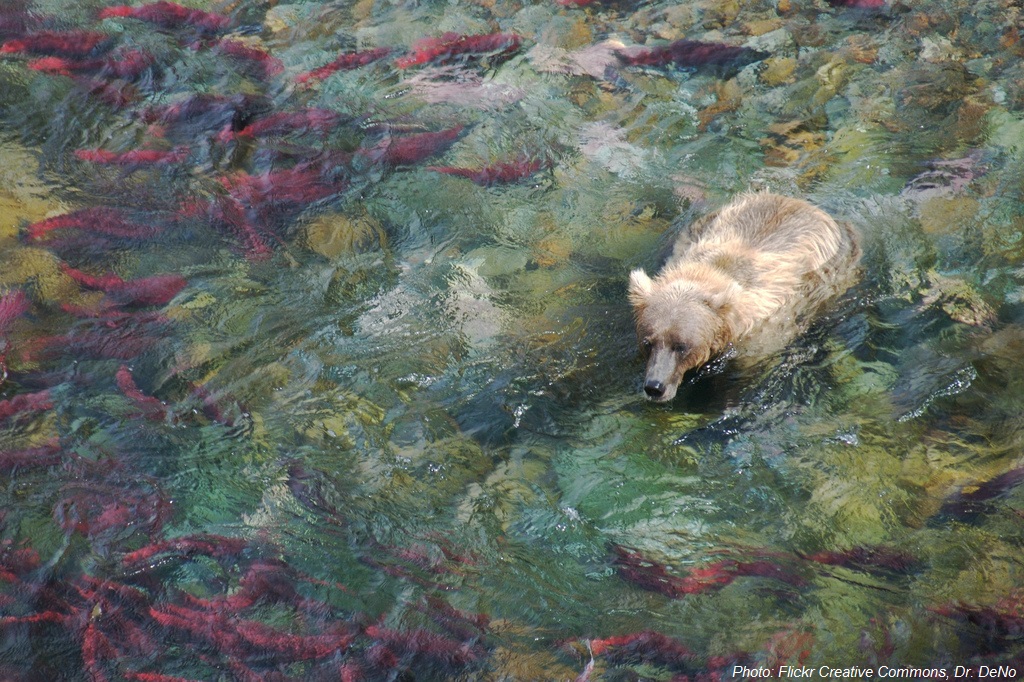My Summer As A Bear Watching Guide

The bear was trying to get around us again. He had approached us twice already, turned away by my fellow guide with a stern word. Our group stood paces up from a wild salmon stream on Chichagof Island in the middle of the Tongass National Forest. The bear, a hefty male coastal brown bear, was intent on walking this stretch of shoreline. At this close range, I could see the twitch of his nose.
This was the closest I have ever been to a brown bear. As he approached from downstream, the head guide decided that there was now enough room to let the bear walk around us. The clients were snapping photos on their phones. I could see the bear’s eye and he looked nervous to be so close to our group.
I held my bear spray loose but with my finger on the trigger. The bear walked between us and the river. He seemed relieved to get back to the fish.
The massive Alaskan coastal brown bear is an animal of legend. They are beautiful and scary, cuddly and powerful. They grow to record-setting size in coastal Alaska because of the plentiful wild salmon and extensive old-growth habitat. Bears need big wild places to roam. One large island in the Tongass is home to the highest density of brown bears in North America; there are more brown bears there than in the rest of the lower 48 states combined. This is what people come to Alaska to see.
Typically solitary, they have learned to tolerate other bears (and people) in close proximity because of the availability of so many wild Pacific salmon. Despite their fearsome reputations, they are intelligent animals that communicate with subtle but specific body language.
I still feel lucky every day I get to work for Ken Leghorn and Alaska Bear Country Guides. Most days, I am the campaign manager for the Alaska Wilderness League’s Tongass program. I work with the outfitters, guides and captains who make their living exploring our nation’s largest national forest to protect the bears, salmon and old-growth trees that make the Tongass unique.
For these bears, protecting healthy salmon runs and healthy forests is key to their continued success. This is one of the reasons why I’m asking the U.S. Forest Service to manage the best salmon watersheds for the salmon, bears and recreation. It’s time to take them off the table for development: these streams are already huge economic drivers for the region’s commercial fishing and sport fishing businesses, and they support wildlife like these iconic bears (so add eco-tourism to the list!). A proposal to ensure than Alaska’s bears have wild places full of wild salmon? Sign me up.
The Forest Service is currently seeking public comment on amending its Tongass management plan. I hope you’ll join me and ask the Forest Service to protect these special lands around our richest rivers and streams in Southeast Alaska. If we don’t, these lands are at risk of logging and other development that will harm salmon. We’ve got a goose laying golden eggs here: a healthy forest is key to lots of fish and big bears.


